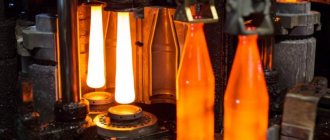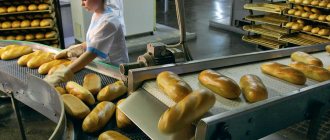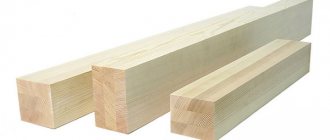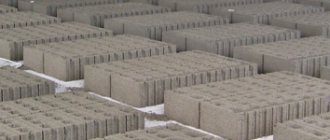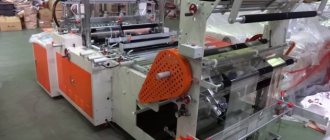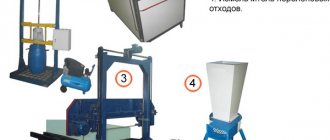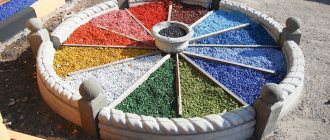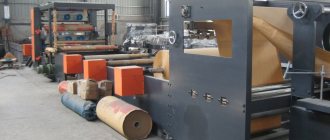Business relevance
The production of polypropylene bags is equipped on specialized production lines. The profitability of this project is based on wide and constant demand. Dry bulk mixtures, feed, building materials, and household waste need durable packaging. Polypropylene bags do an excellent job with this task. Opening your own business in this area is not difficult, the main thing is accurate calculations and competent organization. Start-up investments, as practice has shown, quickly pay for themselves, and an established line brings a stable high income to the business owner.
Business Features
The production of polypropylene bags is a worthy and promising business. Its owner makes money from recycled materials: this is what people throw away every day. Thus, ordinary garbage is turned into useful things. Polypropylene bags are used as containers for transporting products/goods: cereals, sugar, building materials, sand, etc.
Nuances associated with this business:
- minimal expenses on raw materials or there may be none at all;
- finished products do not require special storage space - they do not deteriorate over time, withstand sudden temperature changes, are not eaten by insects, etc.;
- due to the low cost of raw materials, the final income from business activities exceeds 30-40%;
- opening a business will require a lot of documents and permits, since industrial processing is always controlled by the state;
- the production facility should be located far from residential areas, since recycling plastic and other waste leads to environmental pollution;
- in addition to the main expenses for direct production, an entrepreneur should be prepared to pay various state duties, registration of individual entrepreneurs, expenses for documentation, etc.
To collect the necessary documents, you should contact a lawyer to avoid fines in the future.
Where to get raw materials
A cheap option is recycling. But you will have to obtain permission to operate, because... mentioned above - it affects the environment.
A more expensive but safer option is virgin polypropylene. These are small capsules that were once waste but are now recycled and compressed.
Whatever option you choose, you should remember that the market and laws are constantly changing, and you will always have to adapt to them in order to get a decent profit.
What kind of room do you need?
The premises and territory should be immediately taken to a larger size, since the production of bags is profitable, and in a few months expansion will be required. The main equipment is intended not only for the production of bags, but also for other types of packaging. For example, plumbing engineering.
The entire production area is divided into sectors:
- department for the production of polypropylene thread;
- weaving workshop;
- cutting shop;
- office;
- warehouse for raw materials and finished products;
- rest area and locker room for staff.
The premises must be equipped with water supply, ventilation, heating system, sewerage system and located within transport accessibility. A small parking lot for company cars is not required, but is desirable. The budget for vehicles for transporting raw materials and products is approximately 700-900 thousand rubles. It is more profitable to take out a car loan or lease.
It is cheaper to rent a ready-made premises than to rebuild your own. Rent, depending on the region, will be around 200-250 thousand rubles.
How many staff do you need?
The more modern the equipment, the less the number of personnel. For a standard line you need:
- 3-5 loaders;
- 4-5 drivers;
- 15-20 people per workshop;
- 8 people for manual processing;
- manager;
- manager;
- lawyer;
- accountant.
Salary can be either negotiable or regional average. Everything will depend on how quickly the business pays off and how much profit it brings. An entrepreneur should remember that working conditions in the production of polypropylene bags are difficult - high temperatures, paint fumes, noise, etc. Decent salaries and bonuses are welcome.
Manufacturing technology
The main stages of manufacturing polypropylene bags:
- Preparation of polypropylene - primary and secondary materials are mixed with each other, dye and additional additives are added (usually calcium carbonate, which gives the material a white color and strength).
- The finished material is sent to the extruder and heated to high temperatures (up to 260°C).
- Thread production. The material passes through a special nozzle, which turns it into a thin film. It is cut into threads of a given thickness and wound into a reel.
- On a circular loom, parameters are adjusted - thickness, weaving density, fabric size. The resulting sleeve is wound on large disks.
- The canvas is cut into parts.
- The finished fabric is turned several times from the bottom and stitched with synthetic threads. The top can be folded and stitched or left unfinished. To increase strength, additional liners are sometimes sewn to the bottom.
- A flexo printing machine applies a colored design to the finished product.
- The bags are grouped and packed.
Types and features of polypropylene bags
Sugar bags. The most durable polypropylene container. Suitable for storing or transporting sugar and other types of bulk products - salt, cereals, flour. The main material is food-grade propylene, which does not poison the products with toxic emissions.
Properties and dimensions:
- color white, opaque;
- sleeve fabric;
- size 75×46 or 96×56 cm;
- load capacity from 25 to 50 kg;
- fibers are resistant to mechanical damage, temperature changes and do not accumulate electricity;
Polypropylene fabric is suitable for transporting or storing white and cane sugar. The container is strong and resistant to unfavorable temperatures - from +140 to -70 degrees.
Green garbage bags. Polypropylene green bags are made from recycled materials, but at the same time they are durable, spacious and reliable:
- cope with weight up to 40 kg;
- fibers do not wear out during operation;
- fabric density reaches 53g/m2.
Coloring
White or green colored bags are more common. The white color of the container indicates that it is intended for food products, and the green color indicates that it is intended for industrial and other materials. In addition to the primary colors, red, blue, and yellow are used. To order, you can make a bag of any color, with any print or logo.
Among private construction companies, propylene bags with the logo of these companies have become very popular. And for the production of bags painted according to a non-standard scheme, only additional printing ink is required.
Covering the woven layer and perforating the material
There are two types of lamination:
- external;
- internal.
With external lamination, polypropylene threads are covered with a thin layer of molten polyethylene. Thanks to it, the bags are more durable. With internal lamination, the container is sealed. Non-bulk goods are packaged in containers without any lamination.
Microperforation of the material is carried out if bulk food products are stored in bags: salt, sugar, flour, etc.
Load capacity
Polypropylene bags are manufactured either according to the standard or to order. Standard sizes and load capacity of polypropylene bags:
- For 5 kg, 30×45 cm.
- For 10 kg, 40×55 cm.
- For 25 kg, 45×75 or 50×80 cm.
- For 30-40 kg, 50×90 or 55×95 cm.
- For 50 kg, 50×90, or 55×95, or 56×96, or 55×105 cm.
- For 60 kg, 70×120 cm.
- A bag designed for 70 kg has dimensions of 80x120 or 70x120 cm.
- Bags for large cargo (from 70 to 100 kg) have a length and width of 90x130, or 100x120, or 100x150, or 120x160 and 150x200 cm.
Bags made from primary and secondary raw materials have different weights and carrying capacities with similar dimensions. Above are only the most common bag sizes. In practice, products are manufactured in a variety of sizes and with different load-carrying capacities. It all depends on what the container is needed for and what kind of materials or products will be transported in it.
Purpose of packaging and presence of insert
Polypropylene bags are found for food and technical purposes. For transportation and storage of food products, containers made exclusively from virgin polypropylene are used. Recycled raw materials are used to store technical materials. If necessary, the bag is equipped with a polyethylene liner. It protects the contents from external influences and prevents contents from leaking.
Room
You can rent a room outside the city - this will save rental costs. The main condition is the distance from residential premises by 50 m. The total area, including administrative premises and warehouse, should be about 850 m² and divided into the following zones:
- manufacturing facility;
- weaving shop;
- place for cutting parts;
- warehouse for storing finished products;
- administrative premises;
- garage if delivery of finished products is planned.
The room must be equipped with all necessary communications (sewage, water supply, electricity, means of communication for working with clients - telephone, Internet, etc.), have a good ventilation system, and be heated.
Business feasibility study
Capital investments:
- Purchase of equipment – 3,696,139 rubles.
- Delivery of the technical line and installation – 300,000 rubles.
- Purchase of pellets for production – 300,000 rubles.
- Registration with the tax office, payment of monthly rent and other expenses - 200,000 rubles.
The total initial investment in this business will be 4,496,139 rubles.
Revenue calculation:
- Daily production/sales volume, pcs 4160
- Number of shifts per month 30
- Monthly volume, pcs 124,800
- Price for 1 piece, in rub. 8
- Revenue, rub. 998400
Recruitment
Since the PP bag production line is automated, there is no need to recruit a large staff. To service one production line, four workers are enough, who will work in two shifts. The salary of each of them will be 22-28 thousand rubles. per month.
Also, at the first stage, a manager is needed who will be involved in finding and servicing clients and maintaining documentation. Then the main staff will need to hire a driver and a loader.
Technological processes in the production of polypropylene bags
The release of finished products is preceded by several stages, which individually are not particularly difficult, but together they constitute a production process, where each procedure affects the final result:
Table of polypropylene bags
- preparation of raw materials;
- drawing flat thread;
- production of woven sleeves;
- cutting of blanks;
- hemming and stitching;
- packaging of goods.
A separate stage in the production of polypropylene bags is the application of a design with a logo and name on a flexographic machine.
Preparation of raw materials
In the drying machine, polypropylene granules are mixed with other fillers, among which an important place is occupied by the chemical compound of calcium and carbonic acid salts (CaCO3 - calcium carbonate). This component acts as a dye and at the same time gives the material the necessary rigidity.
After this, the mixture is sent to a hopper, and then to a special machine for plasticization (softening) - an extruder.
Extruder EPK 45×30
Getting a flat thread
In the extruder, the mass is heated and, under the action of a press, is pushed through the extrusion head, which is a profiling tool. It gives the material a flat cross-section. The resulting film is cooled, dissolved into strips, which are hardened and drawn into flat threads of the required width.
Next, using a winding machine, the finished thread is placed on spools and sent to the next stage of processing.
Winding machine
Making a woven sleeve
Polypropylene fabric in the form of a sleeve is obtained by weaving threads on a machine. Its parameters (thread tension, warp feed, width) are set depending on the desired result. The product is produced as a continuous sheet, which is wound on bobbins. They are large in diameter and to move them to the place of further processing it is necessary to use special equipment. To simplify the task, you can wind the hose in close proximity to the next production line.
Cutting blanks, turning and stitching
The next procedure in the manufacture of polypropylene bags is to give the product a shape appropriate for its purpose. To do this, the PP sleeve is rolled out on a special line, where it is cut into pieces of equal length (blanks) using a thermal knife. The cut can be smooth or curly, reminiscent of a zigzag. Subsequently, the bottom of the bag is formed on the blanks by tucking and stitching. For stitching, use strong nylon thread.
Products are stacked automatically in batches of several hundred pieces. Each pack is tied with twine and sent to the warehouse.
Purchase of equipment
The production line for the production of PP bags includes:
- mixer;
- mechanism for making flat threads;
- circular looms;
- automatic machine for cutting and stitching product parts;
- laboratory equipment.
You will also need:
- machine for applying flexo printing on finished products;
- extruder;
- pneumatic thermal knife;
- crusher;
- press for packaging products into bales.
Reasons for the increased demand for polypropylene packaging
Polypropylene bags are convenient and practical containers for any bulk materials. Construction mixtures, animal feed, fertilizers, food products, cereals - this is not a complete list of goods for the transportation and storage of which these products will become indispensable. Their main advantages are:
Polypropylene bags - advantages
- wear resistance – reusable;
- impermeability to moisture - availability of use in warehouses and basements;
- resistance to chemicals;
- compactness – when empty, they are very light and take up virtually no space;
- resistance to climate change - they do not lose their qualities when the ambient temperature fluctuates.
But the main advantage of PP bags is their availability. Their price compares favorably with the cost of other types of packaging, and their versatility in use finally tips the scales in their favor.
Financial plan
The main cost item will be directed to the purchase of equipment for the production of polypropylene bags. Its cost depends on the country of origin, power, technical parameters and varies between 2.5 - 5 million rubles.
Business plan for the production of polypropylene bags with calculations:
- acquisition of a Mitra Trading line (China) with a capacity of 1.5 million PP bags/year – 3.5 million rubles;
- equipment installation and maintenance – 300 thousand rubles;
- registration of permits – 10 thousand rubles;
- payment for rent of premises (per year) – 240 thousand rubles.
As can be seen from the calculations, 4.05 million rubles are needed. capital investments.
Fixed expenses (per month):
- wage fund - 80 thousand rubles;
- transportation costs, payment of tax and utility bills - 120 thousand rubles;
- purchase of PP granules, additional components – 300 thousand rubles.
Every month you need to pay 500 thousand rubles. for fixed expenses.
Calculation of project profitability
The average cost of one bag is 3 rubles. Working in two shifts, the production line will allow the production of 100 thousand units per month. If you sell products in bulk, you can set the price at 10 rubles per bag.
As a result, with 100% sales of manufactured products, the income per month will be: 10 rubles. x 100,000 units = 1,000,000 rub.
Calculation of net profit: 1,000,000 rubles. – 500,000 rub. = 500,000 rub.
Thus, the project can be repaid in 8-9 months (RUB 4,050,000/RUB 500,000 = 8.1 months).
Selection of equipment for the production workshop
A standard line for the production of polypropylene bags, designed to produce 150,000,000 products per year, includes the following devices:
- machine for drying and mixing components
- feeding unit;
- extruder;
- winder;
- weaving machine for the production of polypropylene bags;
- thermal knife;
- Sewing machines;
- printing machine for the production of polypropylene bags with a logo.
Over time, you can buy a laminating machine. The price of the machine is approximately 150,000 rubles. Separately, you will have to purchase a crusher, which is used to dispose of waste, and a granulator for processing secondary raw materials into granules.
Purchasing equipment from local suppliers ensures availability of timely line maintenance and repairs. The price of equipment for the production of polypropylene bags depends on many factors and varies from RUB 3,500,000. Almost all elements responsible for controlling the line are made in Japan, which explains the high cost of the machines.
Equipment from China is much cheaper, but the quality of the equipment is often let down. The price of a line manufactured in the Middle Kingdom varies from 270,000 rubles. and higher. Equipment capacity is from 3 to 30 million bags per year.
Sales channels
The main buyers of the products are:
- industrial plants;
- retail outlets;
- small farms;
- agricultural enterprises;
- construction companies;
- wholesale trade bases;
- warehouses;
- dacha and forest cooperatives.
Sales can also be made via the Internet by placing ads on various trading platforms or creating your own business card website.
Download for free a short business plan for the production of polypropylene bags (.rar file):
Example 1
Features of manufacturing PP bags
The technology for producing polypropylene bags consists of several stages.
- When drying, the necessary additives and dyes are added to the propylene granules. Calcium carbonate is used to give the bags rigidity and a snow-white color. After mixing, the composition is fed into the extruder.
- The heated polypropylene passes through the nozzle and is cooled. The resulting thin film is cut into threads of a certain thickness, which are drawn out after hardening and wound onto a reel.
- On the weaving machine, the width and density of the weaving of the threads is set, after which a sleeve is made for the production of polypropylene bags, which is wound onto bobbins.
- The thermal knife is used to cut the sleeve into blanks, and the cutting line can be either smooth or wavy.
- The fabric is folded and stitched on a sewing machine with synthetic thread. The neck of the product can be either stitched or untreated.
- Using sewing machines, a polyethylene liner is sewn into the bags.
- Using a printing press, a logo is applied to the finished product, which can be in color or black and white.
The last step is to pack bags of 500 pieces. The bundles are tied with twine and sent for storage.
Technology for the production of polypropylene bags
Production is divided into several stages:
- Production of polypropylene threads. The polyethylene mass begins to be pressed through a special form or matrix. We can say that production requires special equipment already at the initial stage. Afterwards, the resulting mass is melted and passed through a special head in the machine. The output is a thin film.
- At the second stage, the finished film is cooled and cut into thin strips. It is then passed through a chamber to add strength, color and weight.
- The resulting threads are wound on special spiers.
- Product quality control. It is at this stage that the threads are selected and the detected defects are removed.
- At this stage, having passed the quality selection, the threads are loaded into the loom. And then weaving into a single sleeve begins. The resulting dimensions depend on what the future products will be.
- The finished material is cut into pieces of the required size and sewing of garbage bags begins. If required, an image is applied to the PP bags. The paint used should be water-based as it is environmentally friendly.
Cost price
The bag weighs on average 70 grams.
From one kilogram of granules 14 pieces of bags are produced (approximately 2% of technological losses).
Cost of manufacturing one bag:
| Consumption in kind | Price, | Cost, rub. | |
| PP granules | 68g | 39 RUR/kg | 2,79 |
| PP thread | 0.5g per 1m. | 95 RUR/kg | 0,05 |
| Electricity, kW/h | 0,01 | 3,5 | 0,04 |
| Total production cost of 1 piece, rub. | 2,88 | ||
| Cost per month (124,800 pcs.) | 359 424 | ||
What kind of room is needed?
There are no special requirements for the premises, so almost any workshop can be used. The main thing is that its height is more than 3 meters, it has a ventilation system and a power line (the unit consumes about 4–6 kW per hour. Accordingly, the room needs good lighting, but sunlight should not fall on the finished materials, since they degrade from ultraviolet radiation. For a modern line you need an area of 35–50 m2. You will need the same amount for a warehouse, and 30 m2 for a utility room, an administrative area. That is, in total you only need a room of 100–150 square meters for full-fledged production.
Bags are made from different types of threads
Sales of finished products
Target consumers of PP bags are:
- construction companies;
- agricultural producers;
- industrial companies and enterprises with warehouse complexes;
- wholesale and retail trade enterprises;
- households.
Sales of finished products can be carried out through the following main sales channels:
- through construction and agricultural stores (wholesale construction depots);
- by promoting products to end consumers through the media - printed advertising on stands in garden and dacha cooperatives, printed advertisements) and using interactive media - creeping lines on electronic displays, advertising on monitors and light boxes.
Finding suitable premises for organizing a production workshop
Considering the characteristics of the raw materials for production - polymer materials, the location of the plant for the production of polypropylene bags should be away from residential buildings. The best option is to rent a separate building in the suburbs or in an industrial urban area.
When searching for a suitable premises, you should pay attention to the following parameters:
- availability of necessary utilities (hot and cold water supply, heating system, 380 V power supply, sewerage, possibility of arranging a staff room)
- reliability of the ventilation system
- mounted air filter system
- The area of the premises for installing a line for the production of polypropylene bags must be at least 300 square meters. meters. To organize storage facilities for raw materials and finished products, rooms for staff, a garage for transport - the same amount.
The difficulty in finding premises is that almost all buildings more or less suitable for production have long been occupied. Therefore, you need to be prepared to carry out minor repairs to the premises to bring it into the appropriate condition for starting production, and include the required amount of costs in the preliminary calculations for organizing a business.
Similar business ideas:
- production of plastic bottles
- production of stretch film
- plastic bottle recycling
